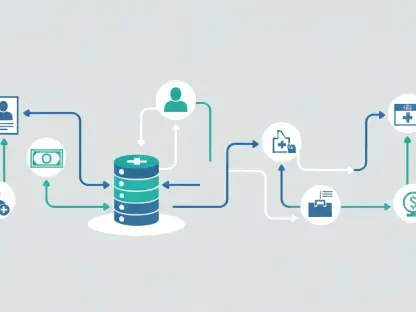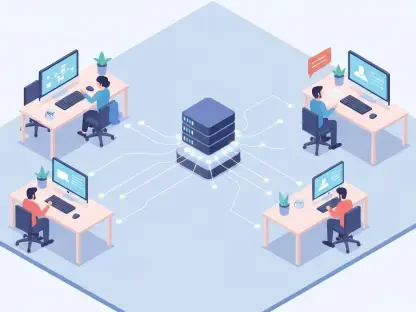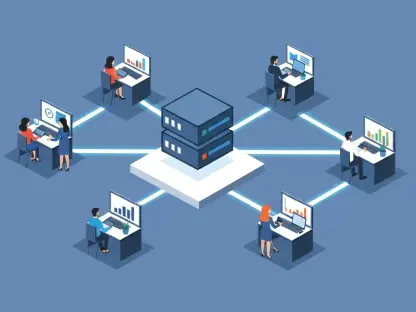Software as a Service (SaaS) is a software distribution model that has gained tremendous popularity in recent years. This is largely due to the ongoing development of cloud technologies and the greater opportunities for software developers to drive innovation further in this area. Even if you’ve never heard of SaaS, you probably use applications provided under this model daily.
Keep reading this article to learn what SaaS is, how it works, and its biggest advantages for your business.
What Is SaaS and How Does It Work
SaaS is a distribution model for applications in which customers receive online access to the tools they need in exchange for a regular subscription fee. The latter uses public cloud infrastructure to operate efficiently, while also storing its resources in the cloud. Therefore, providers do not sell their software as a physical or virtual product that users must install locally on their devices. Instead, they acquire customers who can use the tool as long as they pay a subscription fee. Once users subscribe to the service, they receive the login details for accounts located on platforms provided over the Internet, where they can fully enjoy the program they require.
Let’s look at how making an application available to users in the form of a service is done. For this purpose, we need to go back in time a bit.
Until a few years ago, a user looking to use a certain software had to buy it (often in physical form—for example, on a CD) and install it on their computer. Such a purchase was a one-time deal and typically quite expensive. Moreover, licenses only covered particular versions of the program, compatible with specific operating systems (Windows, iOS, Linux). Sometimes, the program in question was assigned to a hardware configuration, so changing the computer was equivalent to losing the right to use the application.
Thanks to SaaS, those days are behind us. After all, under this model, customers don’t have to buy any software. Instead, they pay a periodic subscription fee and receive online access to the tool they need. Since the software is stored in the cloud, users don’t have to install anything on their computers. The provider is responsible for maintaining the infrastructure and all the resources required for the respective tool to run smoothly.
The Main Advantages of Adopting the SaaS Model
Compared to traditional software licenses, the SaaS model boasts many competitive advantages.
Lower Costs
Under SaaS, companies make their software available to users in exchange for a subscription fee. Sometimes they also do it through a Pay-as-You-Go model, which means that customers pay only for the resources they use. Such a solution removes the barrier that small and medium-sized companies had to face just a few years ago, as they could not afford the hefty costs of specialized software. But the savings generated by SaaS on subscription fees do not end here. When choosing this solution, many operational costs disappear as well, such as fees associated with the installation and integration of software, buying licenses for newer versions of the program, or the need to purchase additional hardware.
Same Operation on Different Operating Systems
Most developers make their SaaS platforms available either from a web browser or in the form of client applications compatible with the most popular operating systems. This means users can comfortably use the tools they need regardless of their operating system. This approach works well for companies, which no longer have to decide on a specific working environment—different team members can use different hardware and still work together using the same tools.
Quick Access from Anywhere
Since the SaaS model stores software in the cloud, users can access it easily. All they have to do is log into their accounts from a device with an Internet connection, and they’ll always have the necessary tools and existing projects at hand. It’s worth remembering that their device doesn’t even have to be a computer. Most often, a smartphone or tablet is enough.
Easy Scaling of the Service
For many entrepreneurs or businesses, the tools used by their companies must be easy to scale. And this is exactly the case with applications available through the SaaS model. When companies are growing rapidly, they typically need to hire more employees, who, in turn, need to be equipped with the tools necessary for their work.
Security
When using SaaS models, users don’t have to worry about security, either. Your employees are still responsible for properly protecting their accounts, but higher-level security is handled for them by engineers employed by the service provider. This is because it’s the software vendor’s responsibility to ensure that processed data and processes do not leak outside the organization. Any business should take this issue very seriously.
Scenarios for Using SaaS Solutions
The SaaS model is now widely used by both governments and private sector companies. Today, we all use mailboxes, cloud drives, and the ubiquitous online services that provide libraries of movies, music, or books. For businesses, the tools distributed through the SaaS model vary by industry. Many companies, for example, use cloud-accessible office suites, such as Google Workspace or Microsoft 365. Specialized tools are also paid for through the subscription model, as is the case with the Adobe Creative Cloud suite or Wondershare Filmora. In turn, e-Commerce entrepreneurs are turning to SaaS solutions to have their online stores set up. Other examples of SaaS used in business include CRMs, time-scheduling tools, and developer applications.









